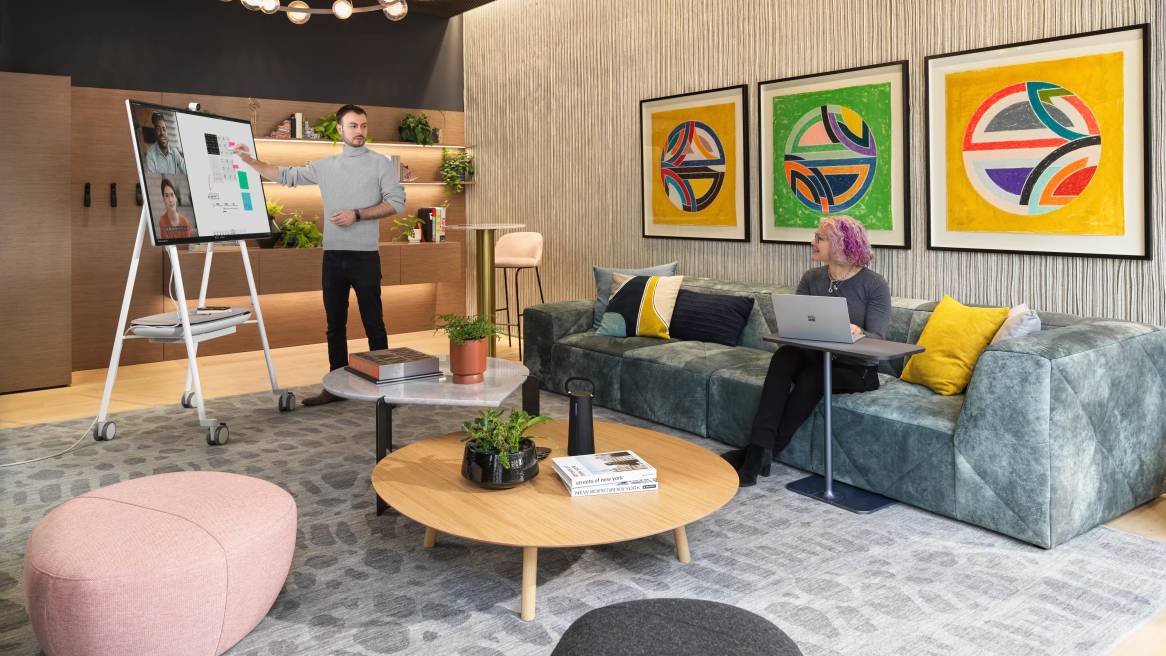Earning the Commute in New York City
New space draws inspiration from vibrant neighborhoods
From downtown delis to bustling bodegas; from serene Central Park to stately brownstones, the “city that never sleeps” boasts neighborhoods known for their diversity and energy. Places of excitement, solitude and rejuvenation — these neighborhoods are as different and eclectic as those who inhabit them. As hybrid work further brings together our work and our life, offices can learn a lot from our best neighborhoods to support different types of organizations, teams and individuals.
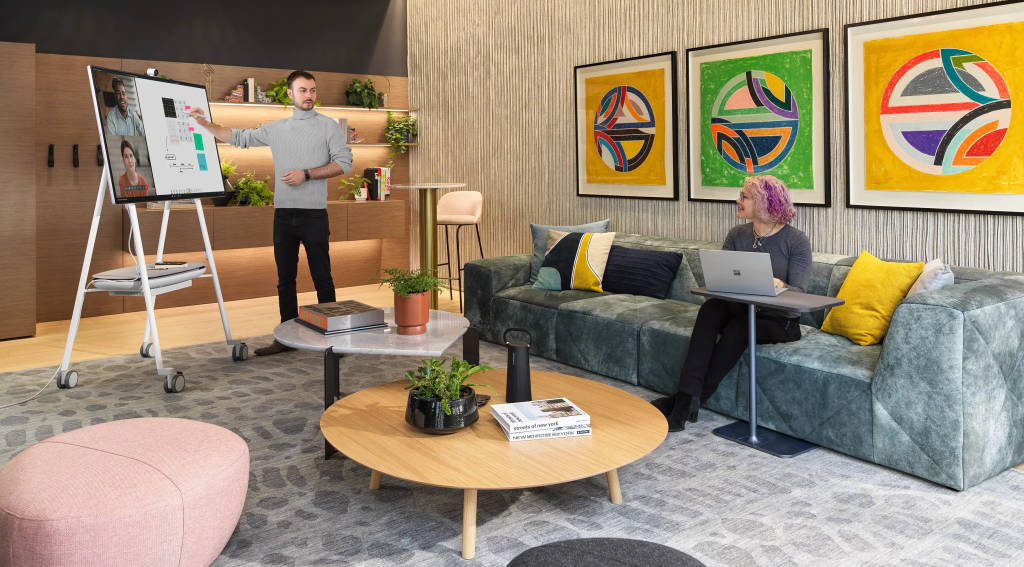
Overlooking iconic Columbus Circle and Central Park, the reimagined Steelcase WorkLife New York is designed for the new ways people are working and reflects the best attributes of the neighborhoods around it to be less standardized (where everyone has the same experience) and more about celebrating unique human needs (where everyone has more choice and control).
WorkLife New York is a living demonstration of how the office can support people in the same way neighborhoods do — providing private “home” spaces for focus work and solitude, a destination where people can feel comfort and a sense of belonging while also featuring supportive collaboration and social settings where team members can connect, collaborate or just enjoy each others’ company.
Hybrid Is Different. Your Office Should Be Too.
According to Steelcase global research, 45% of people prefer working from home while only 21% prefer the office. That means the workplace has to do more to offer a better office experience for people making the commute. It needs to provide better spaces and tools for hybrid collaboration, a greater range of options for privacy and more flexibility.
Designers reimagined the WorkLife New York to reflect the inclusive neighborhoods that surround it. A range of diverse spaces give people more choice and control over where they work each day. Different floors provide homes for different teams, giving people a destination when they arrive. Multi-modal spaces make the new WorkLife highly flexible, as most settings support a variety of work modes. And the modular way the space is planned means that it’s more resilient — change is easier to implement for the organization. Each area of the space offers employees and visitors something new, providing people with an elevated work experience and moments of delight around every corner.
Creating Hybrid Neighborhoods: See six new spaces designed to support people’s needs in the hybrid workplace.
Explore the Hybrid Neighborhood
Social Hubs
WorkLife New York is made up of three floors. The 8th floor hosts a variety of social hubs aimed at different modes of work and collaboration. This is where customers are welcomed into the space and where the New York team gathers to collaborate, socialize or just grab a cup of coffee in the morning. Its breathtaking views of Central Park bring the outside in and high-performance tools like the Microsoft Surface Hub 2S, Steelcase Flex Markerboards and Mobile Power give people what they need to get work done.
THE SKYBOX
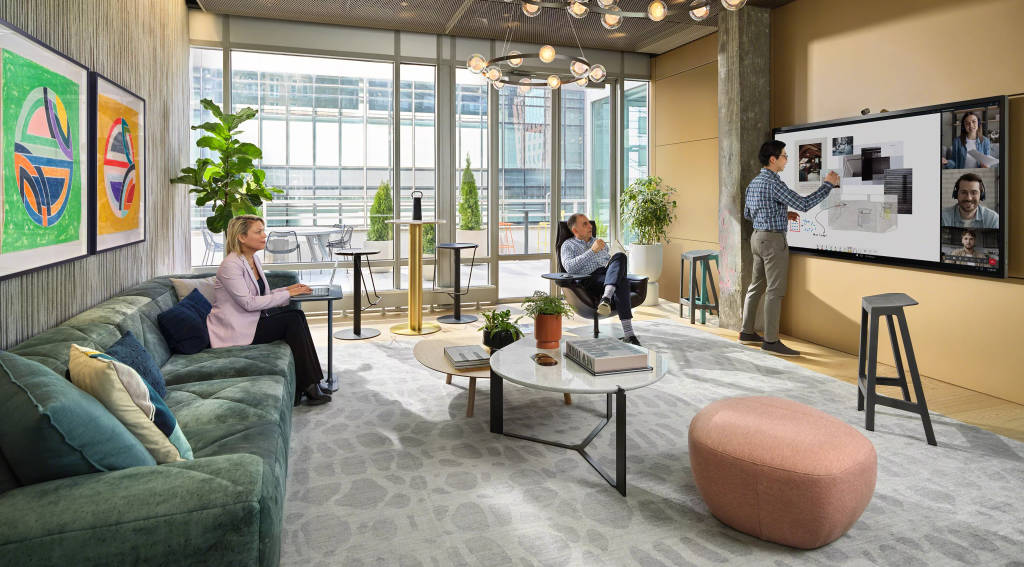
The “Skybox” is quickly becoming the New York team’s go-to hybrid collaboration space. It’s a larger, enclosed space with plenty of natural light and views to the floors below. This space is geared for generative team collaboration as it provides a greater level of visual and acoustic privacy. The 85” Microsoft Surface Hub 2S pairs with various seating options to support a variety of postures. The casual setting, which includes lounge chairs and Steelcase Flex Perch stools — creates a great space for relaxed conversations and informal generative collaboration. The nearby terrace also provides an important area of natural respite during longer-form team meeting sessions.
THE WORKCAFE
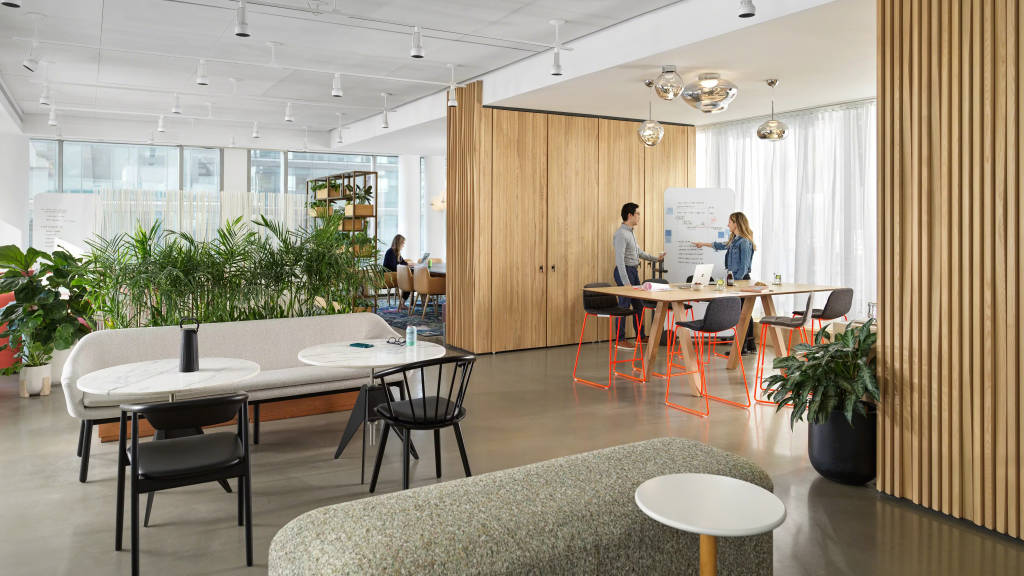
Throughout the day, the team in New York and its visitors frequent the open WorkCafe which features a variety of seating postures, tables and mobile collaboration tools. The WorkCafe is a place where people can unwind, get some respite in a light and airy environment, make serendipitous social connections and share ideas. It’s a great space for impromptu meetings or casual one-on-one conversations. With the natural daylight, plants and vertical elements such as walls, screens and open shelving, the WorkCafe has proven to be an exciting and inviting space for the team.
THE FRONT PORCH
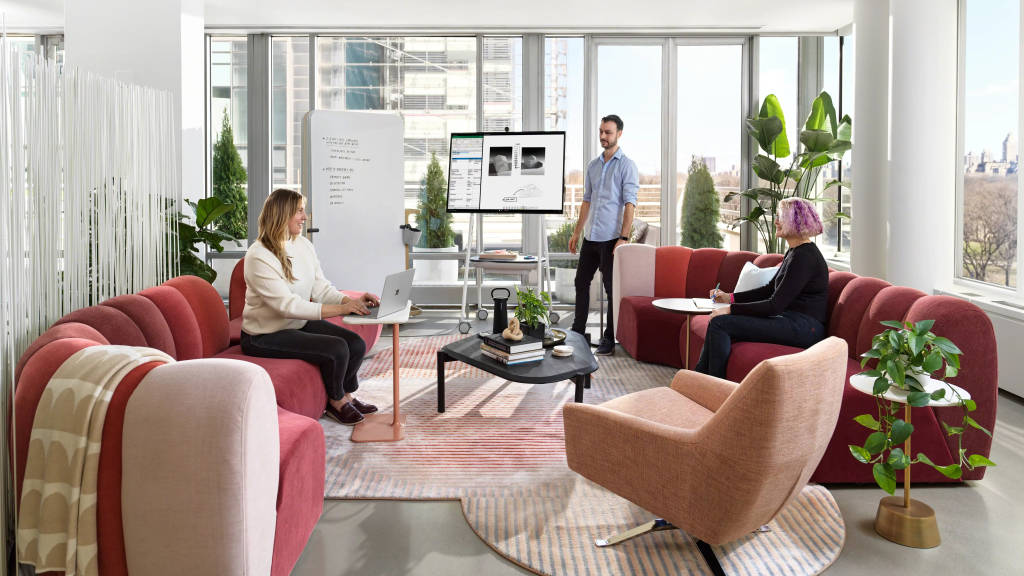
Like every good neighborhood, you need great front porches to invite people in and build relationships. This space fills the bill, blurring the lines between office social spaces and collaboration spaces to provide a comfortable team-owned area where quick conversations and hybrid collaboration can occur with ease. Mobile monitors and carts allow for flexibility. Screens and other barrier elements provide a sense of privacy without acoustic isolation. Comfortable seating options and Steelcase Flex Mobile Power allow people to sit, have a place for their devices and plug in to get work done.
Home Is Where the Heart Is
The primary feature of a workplace neighborhood is exactly like a real neighborhood — a place that feels like home. It’s a space that provides emotional comfort and a sense of belonging, where you know you can find your teammates and a place to work. The hybrid neighborhood — like real neighborhoods — consists of a variety of different types of spaces for different needs.
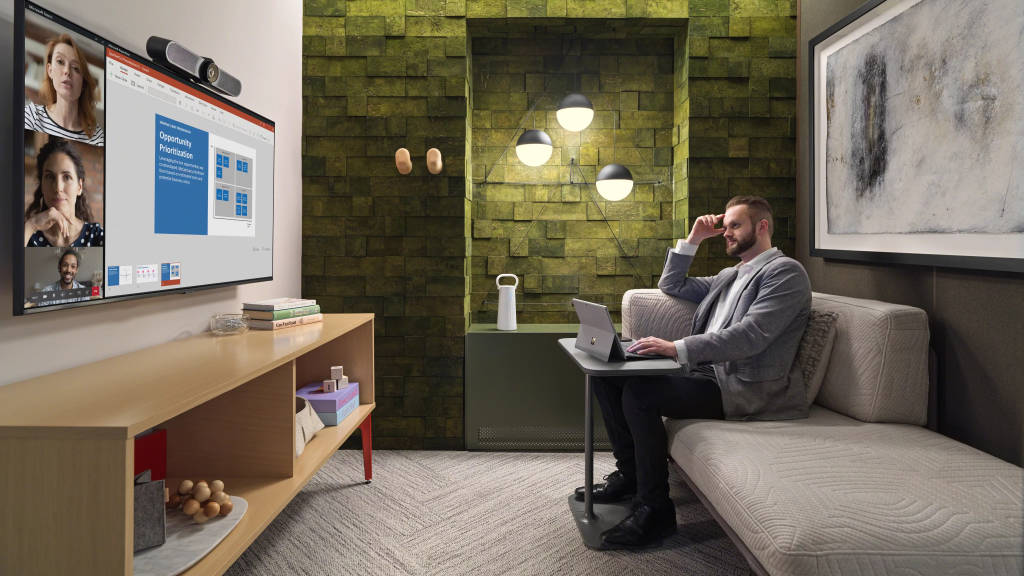
FOCUS ROOMS
Individual focus rooms give everyone in the WorkLife New York the ability to escape from noise or distractions.They include integrated technology, a monitor and camera positioned for better looking virtual connections, along with a curated background that provides a memorable spot for video calls, which have become the norm for hybrid work. Lounge seating supports upright or a more relaxed posture, and portable power keeps your devices working. These spaces provide the highest level of visual and acoustic privacy for confidential meetings and strategy sessions.

Real homes are diverse and unique; some are owned while some are rented. Some are larger for big families while others are smaller for individuals. In the workplace the same is true — these focus rooms allow for a variety of experiences based on what people need to get done or how they’re feeling each day. For instance, the personal enclave on the far left is meant to be a longer-duration workspace where someone can sit and establish a homebase for the day — or longer. It could even be owned, or a private office. The space in the middle is more of a temporary workspace where someone can connect with a colleague virtually for a meeting and get some privacy and control over their environment. The space on the right is more open with a visual barrier to create the feeling of having some territorial control during a shorter duration stay. This is a great space to spend a few moments to do something personal, gather your thoughts and get a few moments of reprieve.
Change Is Needed
The idea of designing the office as a neighborhood is newly relevant. This new era of hybrid work means people will have choices about where to work and how to work. Offices need to earn people’s commute by meeting their needs: supporting hybrid work, establishing connections and creating an environment that fosters a sense of belonging and community. This can happen by drawing inspiration from a new source that is focused on humanity – on the vibrant communities in which we live.
Creating Hybrid Neighborhoods: See six new spaces designed to support people’s needs in the hybrid workplace.
Explore the Hybrid Neighborhood

